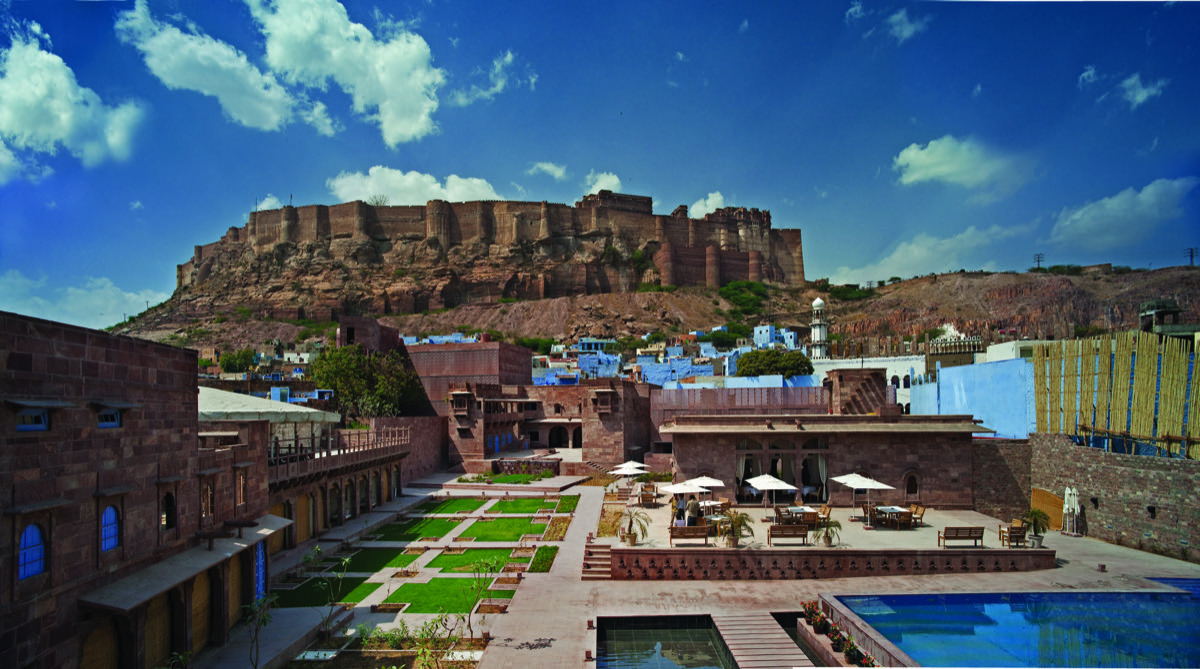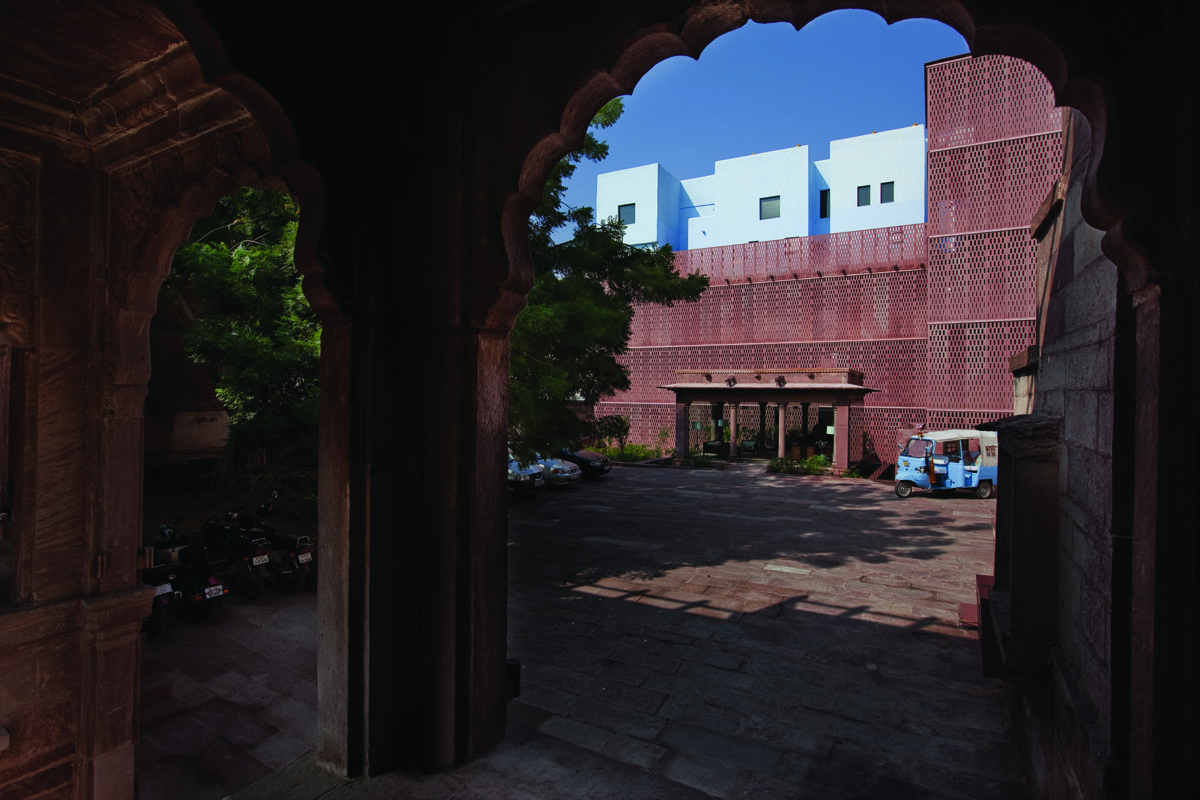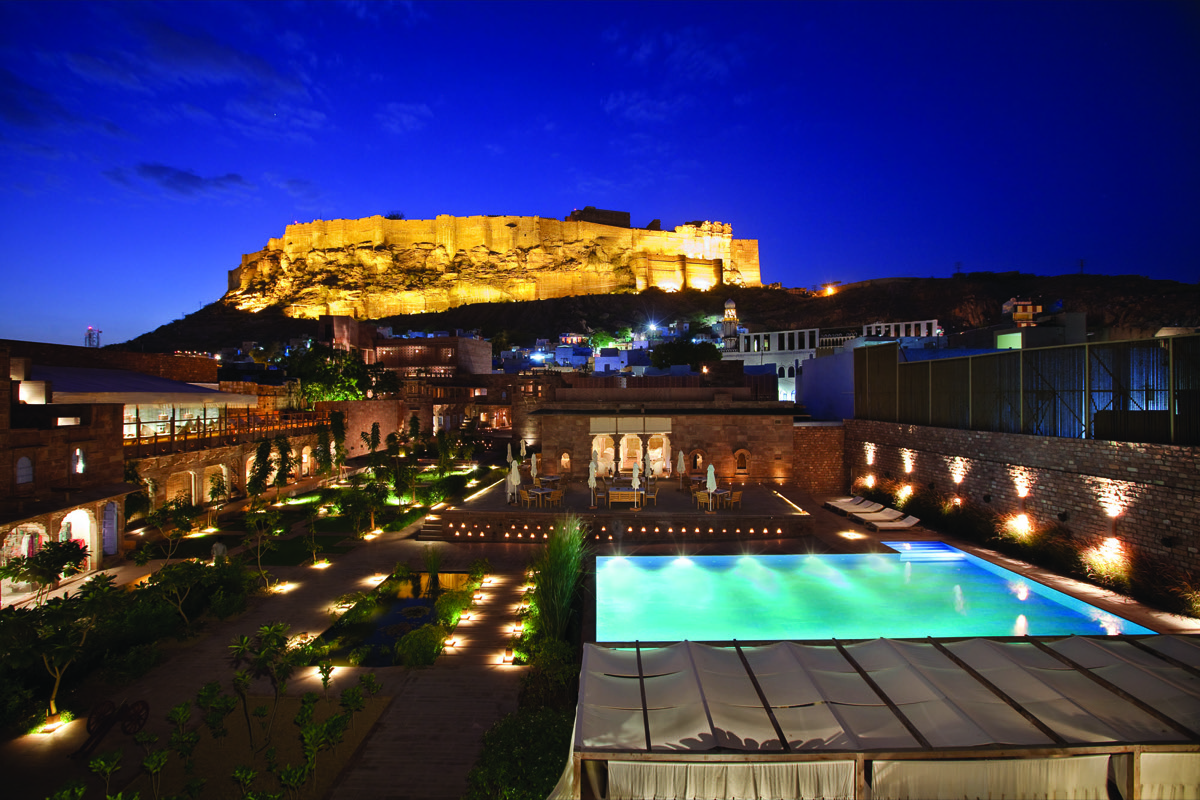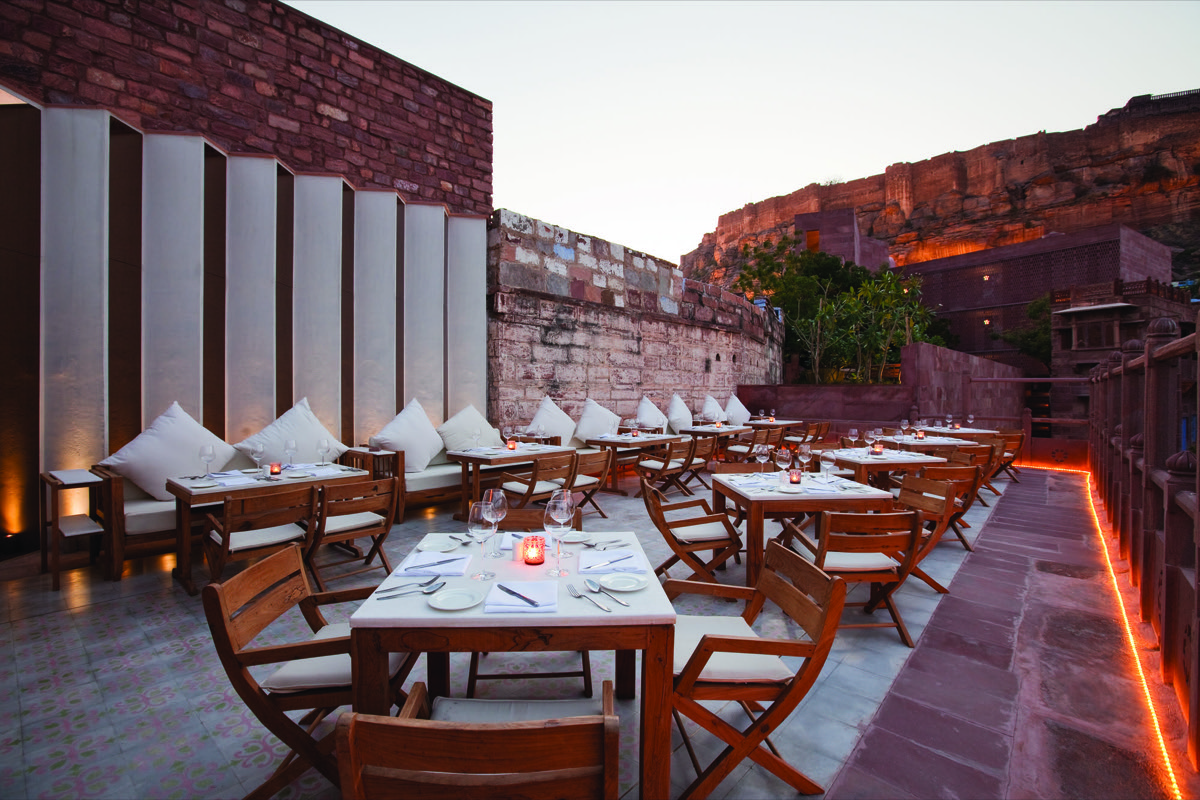The Lotus Praxis Initiative
Project leaders: Ambrish Arora & Rajiv Majumdar
Design Team: Arun Kullu, Radha Muralidhara, Anuja Gupta, Ruchi Mehta
Photographers: Andre J. Fanthome, Rajen Nandwana
Total site area: 6,000 square meters
Built up area: 4,000 square meters
CONCEPT:
Hand crafting a story for today.
Set in the heart of the walled city of Jodhpur, Rajasthan, RAAS is a 1.5-acre property uniquely located at the base of the Mehrangarh Fort. The brief was to create a luxury boutique hotel with 39 rooms in the context of the Old city quarter of Jodhpur. The property was inherited with three decrepit period structures (17th-18th century) set in a large courtyard. The central idea was to make old buildings and the expanse of the courtyard the anchors for the Raas experience. The new buildings are placed into the site to serve as framing elements and as contemporary counterpoints to the site and the fort.The old buildings have been painstakingly restored with traditional craftsmen in the original materials such as lime mortar and Jodhpur sandstone. Since the footprint of these buildings was very small it was decided that these would be best used as shared spaces to be enjoyed by all the guests, such as the pool, dining areas, a spa, open lounge areas These old buildings also house 3 heritage suites.
The balance thirty six rooms are housed in contemporary buildings that become framing elements to the site and strongly respond to the context. Age-old materials and skills are manifested as a contemporary and understated graphic form derived from multiple functional and programmatic parameters. These new buildings are inserted into the site in a manner that they accentuate the spatial and formal relationship among the old buildings and the Fort, creating a dialogue between the old and the new.
Inspired by the age-old double skinned structures of the region, (the traditional stone latticed jharokha form of Rajasthani architecture – which perform multiple functions of passive cooling and offering privacy to the user) these buildings act as lanterns framing the site. The drama of the stone jaali (lattice) is heightened by the fact that these panels can be folded away by each guest to reveal uninterrupted views of the fort, or can be closed for privacy and to keep the harsh Jodhpur sun out.
Luxury is infused into the project through authenticity both in terms of materials and workmanship.
INTEGRATION IN SURROUNDINGS
The fact that we had three 18th century buildings on our site – together with the fact that we were building in the old city gave us a very strong contextual framework to work within. The idea was to retain a sense of connection with the old city and yet create the feeling of being in an oasis within the hustle and bustle of things. The core discussion centered around providing visitors a tactile and sensual and authentic experience of living within the historical context of the old city of Jodhpur. This guided the planning and placement of the new structures. The property has been planned as an inward looking development reaching out to include the surrounding walled city in the experience.

This has been done by the following gestures:
1. The sense of arrival – The sense of meandering through narrow bye lanes of the walled city has been extended into the property through the architectural planning. The new hotel wing acts like a second gate that holds on to the dramatic ‘reveal’ as the guest enters the main courtyard.
2. The monochromatic palette of the local Jodhpur Sandstone in all its hues and textures seems to make Bring the Fort into the site and make it a seamless part of the experience of the Hotel
3. The new buildings respond both to the heritage structures and to the organic form of the Blue walled city dwellings, without aping the old.
4. Almost all the rooms had to have a view of the fort.
SUSTAINABLE ASPECTS
Localisation – Crafted by over a hundred regional artisans and master-craftsmen, the development – building and interiors – is conceived and executed using the fundamentals of sustainable architecture. This was achieved by restricting ourselves to a very tight palette of using locally available materials and skills. 70% of the materials and people used on site have been sourced locally, most within a 30 km radius.

Passive & Active Cooling/ Heating :
The new buildings are designed as double skinned structures, with the outer skin being a “breathing” stone lattice wall that keeps out heat and a deep recessed inner skin of glass. The fact that Jodhpur is one of the sunniest cities in India has been harnessed and all hot water in guest rooms is solar heated.
The air-conditioning system is Variable Refrigerant Volume based, amongst the greenest technologies available currently for air-conditioning.
Managing Water:
All the rainwater runoff from the buildings and rest of the site is being harvested through pits that are an integral part of the landscape. 100% of the wastewater generated is reused at site using a Sewage treatment plant.
USE OF MATERIALS
The story of Raas is created using ordinary, locally available materials. Jodhpur has a very strong living tradition of craft – stonework, woodwork, metal work and access to local craftsmen and artisans of the highest caliber. These simple materials were then worked on by a team of craftsmen to hone and transform into something extraordinary. This transformation is what imbibes a sense luxury to the hotel.
Every element is handcrafted with a focus on simplicity, and function – beauty being the skill and care of the craftsperson that has gone in to creating the piece. Materials include hand cut stone, poured in situ pigmented cement terrazzo on floors, walls and as furniture. Locally crafted furniture and cabinets are in sheesham (a local Indian hardwood).
Ambrish Arora explaining the approach to designing Hotel Raas, below:


















